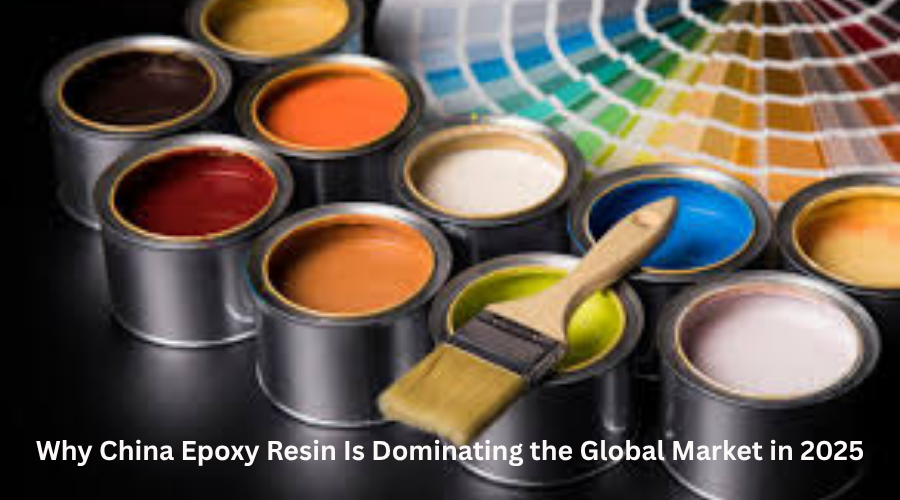Top 7 Applications of Foam Resin in Modern Manufacturing
- qinglongdatech
- Aug 5
- 5 min read

In today’s ever-evolving industrial world, materials that offer versatility, efficiency, and performance are essential. One such material making significant waves is foam resin—a lightweight yet durable compound used across a wide range of industries. Whether it's creating stronger packaging, enhancing insulation, or developing components for advanced electronics, foam resin has become a go-to solution for engineers and product designers alike.
As demand increases, choosing the right Foam Resin manufacturer becomes critical to ensuring product consistency, cost-efficiency, and sustainability. With that said, let’s explore how foam resin is shaping modern manufacturing and dive into the top seven applications of this game-changing material.
1. Advanced Packaging Solutions
One of the most common and impactful uses of foam resin lies in packaging. Manufacturers across industries—from electronics to medical devices—rely on foam resin for its shock-absorbing, cushioning, and lightweight properties.
Foam resin is widely used to:
Protect fragile goods during transport
Provide custom-cut inserts for tools, gadgets, and instruments
Lower transportation expenses due to its low weight
Resist moisture and chemical damage
What sets it apart is that it can be tailored into various densities and thicknesses, making it suitable for both high-end protective packaging and economical disposable packaging. It’s no wonder that packaging experts consider foam resin a smart investment for reducing product damage and enhancing brand value.
2. Automotive Components and Insulation
The automotive industry has embraced foam resin for both functional and safety-related purposes. Modern vehicles are expected to be quieter, safer, and more energy-efficient, and foam resin plays a central role in delivering these outcomes.
Key automotive uses include:
Interior padding in doors, dashboards, and headrests
Soundproofing panels to reduce road noise
Thermal insulation for HVAC systems
Lightweight fillers to reduce vehicle weight and improve fuel efficiency
Thanks to its malleable and resilient nature, foam resin can be molded into specific shapes while maintaining structural integrity. As the industry shifts toward electric vehicles, materials like foam resin are helping to balance performance, comfort, and environmental standards.

3. Construction and Building Insulation
Foam resin is transforming the construction sector by offering high-performance insulation materials. From private residences to commercial buildings, it is being used to meet stringent energy efficiency regulations and thermal performance requirements.
Applications in construction include:
Wall cavity insulation
Roofing and underfloor insulation panels
Window and door frame sealing
Fire-resistant barriers and sound insulation
Foam resin excels in its ability to create an airtight seal, significantly minimizing energy loss. It also provides resistance to moisture, mold, and pests—making it a favorite among contractors seeking long-lasting building solutions.
4. Footwear and Apparel Manufacturing
Ever wondered what makes your sneakers feel so lightweight and bouncy? Chances are, it’s foam resin. This material is extensively used in the footwear and fashion industry, particularly in products that demand comfort, durability, and shock absorption.
Common applications include:
Shoe soles for sports, running, and casual wear
Padding in helmets, gloves, and jackets
Orthotic and insole materials
Impact-resistant sports gear
Foam resin can be engineered for different densities and hardness levels, offering customized support depending on the intended use. It also contributes to sustainability, as many foam resin types can now be recycled or made from bio-based alternatives.
5. Medical Devices and Equipment
Precision, safety, and hygiene are crucial in healthcare. Foam resin plays a vital role in medical applications where comfort, sterility, and adaptability are key. It offers flexibility in aesthetics and utility, making it ideal for an extensive variety of medical products.
Common medical uses include:
Foam padding in hospital beds and wheelchair seats
Custom orthopedic supports and prosthetics
Disposable medical packaging and inserts
Wound care products like dressings and pressure relief pads
Because foam resin is hypoallergenic and easy to sterilize, it’s an ideal material for single-use and reusable devices. Medical device manufacturers appreciate its cost-efficiency and adaptability to complex shapes.
6. Electronics and Electrical Applications
In electronics, precision and protection go hand in hand. Foam resin is increasingly used to shield delicate components, minimize vibrations, and prevent overheating in gadgets and electronic devices.
You’ll find foam resin in:
Gaskets and seals for electronic enclosures
Thermal insulation for circuit boards
Protective padding in devices like smartphones and tablets
Battery compartments in electric tools and appliances
Its non-conductive and heat-resistant qualities make it ideal for demanding electronic environments. Additionally, manufacturers value its ability to be custom-die cut, allowing exact specifications to be met with minimal waste.
7. Aerospace and Defense
The aerospace and defense sectors have some of the most rigorous material requirements in the world. Foam resin stands out here by offering lightweight strength, impact resistance, and temperature tolerance—all crucial characteristics for mission-critical components.
It is used in:
Interior aircraft panels and seating insulation
Vibration dampeners in drones and aircraft systems
Protective casing for military gear
Structural cores in composite materials
Foam resin’s versatility and performance under pressure make it a strategic material for engineers building the next generation of aircraft and defense systems. Every gram matters in aviation—and foam resin helps reduce weight without sacrificing safety.
Why Foam Resin Is Here to Stay
From packaging and automotive to construction and aerospace, foam resin is proving to be a core material in modern manufacturing. Its combination of durability, lightness, adaptability, and cost-effectiveness allows it to fit into both legacy systems and cutting-edge designs. As industries continue to innovate, expect foam resin to become even more vital.
Conclusion
Foam resin is more than just a filler or cushion—it’s a strategic enabler of innovation across nearly every manufacturing sector. By understanding its diverse applications, companies can make smarter choices, improve their product performance, and gain a competitive edge in the market. Whether you're looking to reduce costs, enhance sustainability, or improve functionality, foam resin offers a practical and high-performing solution. And by working with a trusted manufacturer, you ensure that your products benefit from consistent quality and technological advancement.
FAQs
Q1: What exactly is foam resin made of?
A: Foam resin is typically made from polymers such as polyurethane, polyethylene, or EVA. These materials are processed to create a cellular structure, resulting in a lightweight and flexible foam.
Q2: Is foam resin environmentally friendly?
A: Many modern foam resins are now being produced with eco-conscious alternatives, including bio-based materials and recyclable versions. Some manufacturers offer closed-loop recycling systems for industrial foam.
Q3: Can foam resin be used outdoors?
A: Yes, depending on the formulation. Certain types of foam resin are designed to be UV-resistant, moisture-proof, and temperature-tolerant, making them suitable for outdoor use in construction, automotive, or packaging.
Q4: How does foam resin compare to traditional plastics?
A: Foam resin offers the lightweight and cushioning benefits that traditional plastics do not. While both are polymer-based, foam resins are generally more suited to applications requiring shock absorption, insulation, and flexibility.
Q5: How do I choose the right foam resin for my application?
A: Start by identifying your performance needs—do you need cushioning, heat resistance, flexibility, or structural integrity? A qualified manufacturer can help guide you to the most suitable formulation based on your project’s specifications.







Comments